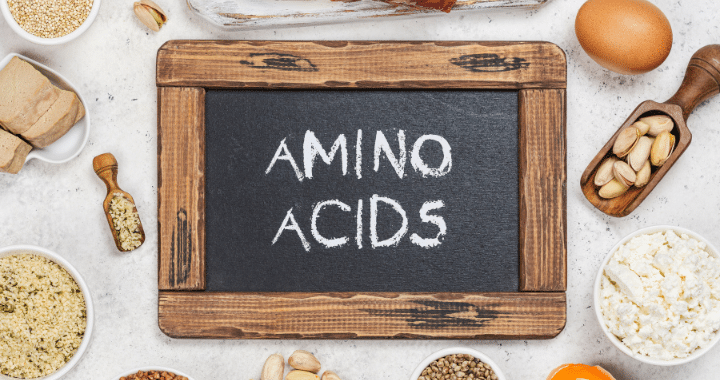BCAAs vs. EAAs: Which One Should You Choose?

When it comes to building muscle, enhancing recovery, and improving workout performance, two popular supplements often come into the conversation: BCAAs (Branched-Chain Amino Acids) and EAAs (Essential Amino Acids). While both play crucial roles in supporting fitness goals, understanding their differences can help you make an informed choice.
Let’s break down what BCAAs and EAAs are, their benefits, and when to use each.
What Are BCAAs?
BCAAs are a group of three essential amino acids: leucine, isoleucine, and valine. They are called “branched-chain” due to their unique molecular structure. These amino acids are particularly important for muscle metabolism and are highly concentrated in muscle tissue.
Key Benefits of BCAAs
- Muscle Protein Synthesis (MPS):
Leucine, one of the BCAAs, is a powerful trigger for muscle protein synthesis, which helps in muscle repair and growth. - Reduced Muscle Breakdown:
BCAAs can decrease muscle protein breakdown during intense exercise, preserving muscle tissue. - Improved Workout Performance:
BCAAs are readily available energy sources during exercise, helping delay fatigue. - Faster Recovery:
They can reduce muscle soreness (DOMS) after strenuous workouts, enabling quicker recovery.
What Are EAAs?
EAAs are a group of nine amino acids that the body cannot produce on its own, so they must be obtained through diet or supplements. The nine EAAs include:
- Leucine
- Isoleucine
- Valine
- Histidine
- Lysine
- Methionine
- Phenylalanine
- Threonine
- Tryptophan
EAAs include the three BCAAs, but they also provide six additional amino acids necessary for building and repairing muscle tissue.
Key Benefits of EAAs
- Complete Muscle Protein Synthesis:
While leucine (a BCAA) stimulates MPS, all nine EAAs are required to complete the process of building new muscle proteins. - Enhanced Recovery and Growth:
EAAs provide the full spectrum of amino acids needed for optimal recovery, muscle repair, and growth. - Improved Overall Nutrition:
EAAs contribute to various bodily functions, including hormone production, immune function, and nutrient absorption.
BCAAs vs. EAAs: The Main Differences
| Aspect | BCAAs | EAAs |
|---|---|---|
| Composition | 3 Amino Acids: Leucine, Isoleucine, Valine | 9 Amino Acids (includes BCAAs) |
| Muscle Protein Synthesis | Triggers MPS but requires EAAs for completion | Complete MPS and supports muscle repair |
| Usage in Workouts | Energy during exercise, reduces fatigue | Recovery, repair, and complete muscle growth |
| Scope of Benefits | Focused on muscle maintenance | Broader health and recovery benefits |
| Cost | Often less expensive | Typically more expensive |
When Should You Use BCAAs?
BCAAs are best for:
- During Workouts: As an intra-workout supplement to reduce fatigue and muscle breakdown.
- On a High-Protein Diet: If your diet already provides enough complete proteins, BCAAs can act as a targeted boost for muscle recovery.
- Budget-Friendly Option: If cost is a concern and your primary goal is reducing soreness and maintaining muscle.
When Should You Use EAAs?
EAAs are ideal for:
- Muscle Building: EAAs provide all the essential amino acids required for complete muscle protein synthesis, making them more effective for muscle growth.
- Low-Protein Diets: If your diet lacks sufficient protein, EAAs can fill the gap and ensure your body gets all the amino acids it needs.
- Comprehensive Recovery: EAAs support overall recovery and provide benefits beyond just workout performance.
Which is Better for Your Goals?
- Muscle Growth and Recovery: EAAs are superior because they contain all nine essential amino acids needed for complete muscle protein synthesis.
- Fatigue Reduction During Workouts: BCAAs are a good choice as an intra-workout supplement to provide quick energy and reduce muscle soreness.
- Overall Nutritional Support: EAAs offer broader benefits for those with dietary gaps.
How to Incorporate Them into Your Routine
- BCAAs: Mix 5–10 grams with water and sip during your workout or immediately after.
- EAAs: Take 10–15 grams either before or after your workout, or during the day if your diet lacks sufficient protein.
Final Thoughts
Both BCAAs and EAAs are valuable tools in your fitness arsenal, but their effectiveness depends on your specific goals, dietary habits, and workout routine. If you’re looking for targeted muscle recovery during workouts, BCAAs may suffice. However, for complete muscle growth and overall recovery, EAAs are the better option.
Whichever you choose, ensure your overall protein intake aligns with your fitness goals. Supplements are just that—supplements. A balanced diet rich in whole foods should always come first.
Fuel your progress with the right amino acids, and watch your performance soar!


